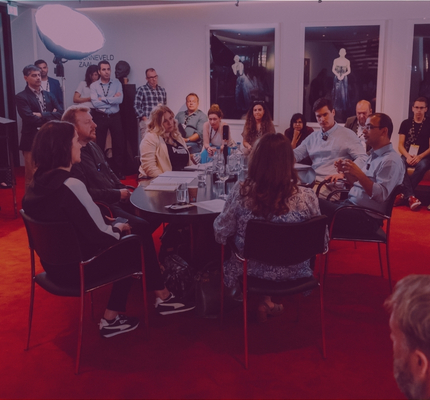
TV
Customer Service Starts at the Digital Experience
For too long, customer service has been viewed as just another department, an afterthought that only becomes a priority when something goes wrong. But according to Jo Causon, CEO…

For too long, customer service has been viewed as just another department, an afterthought that only becomes a priority when something goes wrong. But according to Jo Causon, CEO of The Institute of Customer Service, this attitude needs to change. In a recent speech at Discovered London, she emphasized the importance of customer service to the bottom line of organizations, and how organizations that prioritize it can see significant financial benefits.
Causon highlighted that the organizations that see above-average customer satisfaction are the ones where the board takes responsibility for the customer experience, owning it as a core part of their business strategy. These organizations not only have a 10% higher level of profitability over a five to eight-year period, but they also have up to 5% higher levels of revenue and 114% higher levels of productivity. In other words, prioritizing customer service is crucial to the financial well-being of an organization.
But customer service is not just about financial performance. Causon also stressed the importance of employee well-being, which is becoming increasingly important to customers. According to The Institute’s research, 20% of consumers will not buy from an organization if they don’t think their staff are being treated well. Organizations need to consider the impact of their actions on their employees as well as their customers.
To measure customer satisfaction across the UK, The Institute of Customer Service has been tracking the UK Customer Satisfaction Index since 2009. The index covers 13 different industry sectors, not just retail, and amounts to nearly £11 billion every month spent trying to rectify customer service issues. This underscores the need for organizations to get it right the first time and focus on the customer experience across the board.
Causon argued that satisfaction with complaint handling has stalled, and organizations need to focus on the upstream factors that contribute to customer satisfaction, such as product design, website navigation, and aftercare service. Organizations that score nines and tens out of ten on the UKCSI have a 50% higher level of brand loyalty. Customer service, therefore, is not just a cost center, but a key driver of business growth.
But how has the COVID-19 pandemic affected customer behavior and expectations? Causon identified a few key trends. First, there has been a growth in digital, and organizations need to balance which parts of the customer journey are best delivered digitally and which require human intervention. Speed, connectivity, and simplicity are increasingly important, but so is authenticity and demonstrating that the organization cares about its customers.
Second, there is a need for reassurance, which transcends all age groups. Consumers want to feel more connected, and they place more importance on their family, localness, upcycling, and recycling. Third, there has been an increase in hostility towards customer service professionals, and organizations need to provide more support and reassurance to their staff.
Finally, consumers are thinking more carefully about what they spend their money on, and they are looking for products and services that impact their health and well-being or their family’s health and well-being. They are also making more sustainable choices, such as buying products that last longer and upcycling and recycling.
Causon’s speech highlights the need for organizations to prioritize customer service and view it as a key driver of business growth rather than a cost center. By focusing on the customer experience across the board, organizations can see significant financial benefits, including higher profitability, revenue, and productivity. But customer service is not just about financial performance; it is also about employee well-being and demonstrating that the organization cares about its customers.
As the world continues to change, organizations need to adapt to meet the evolving expectations of their customers. By keeping up with the latest trends and providing reassurance and support to their customers and staff, organizations can build brand loyalty and ensure long-term success.


